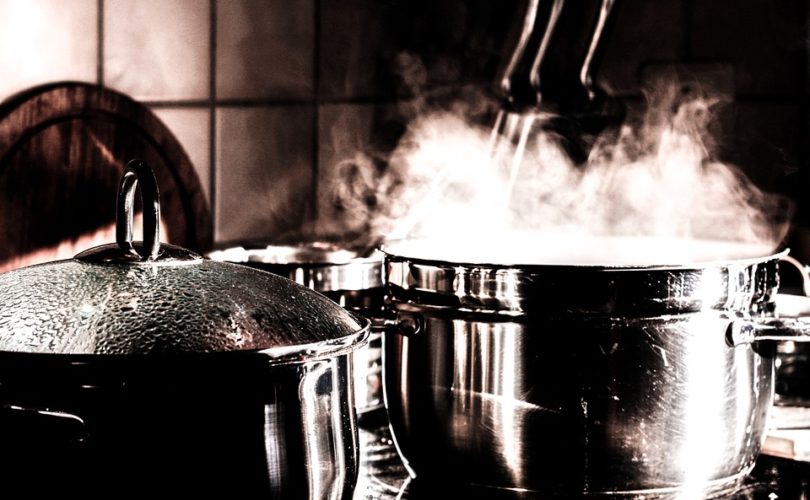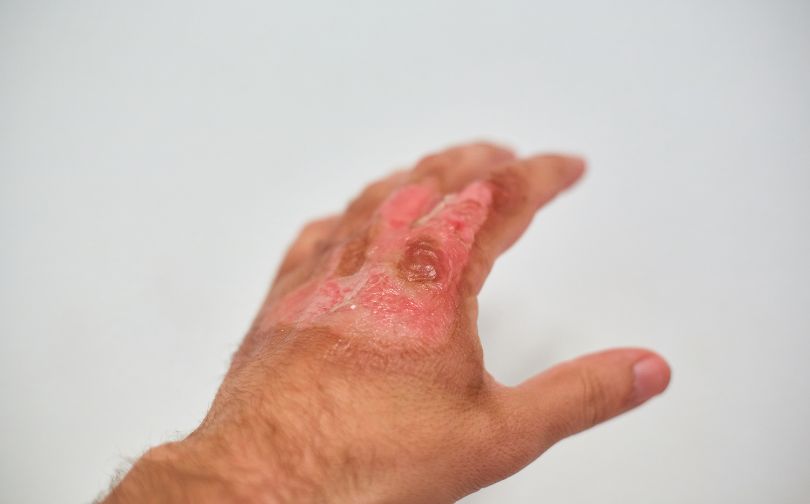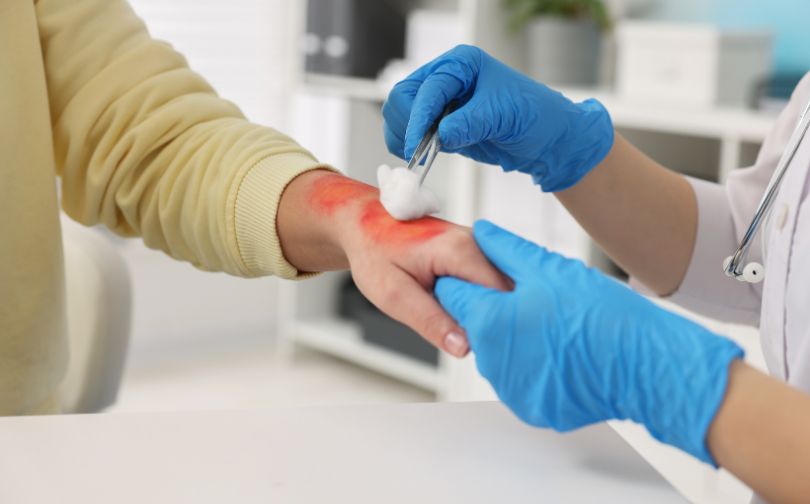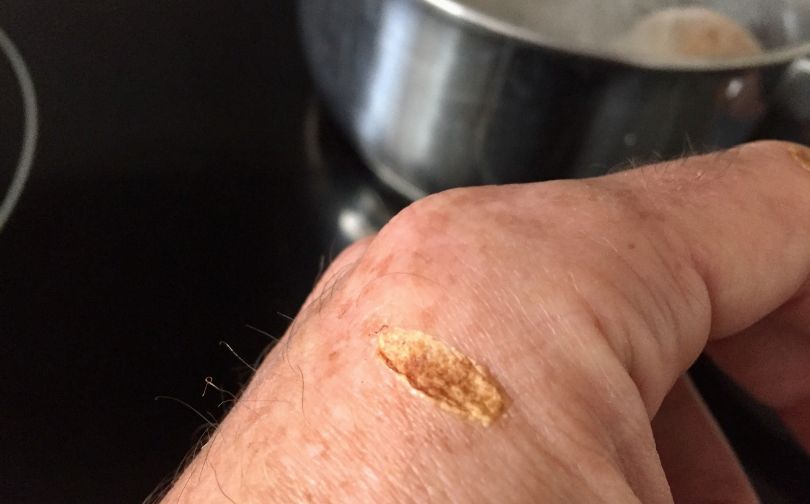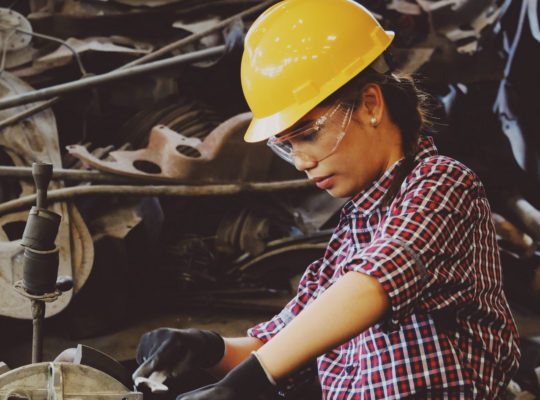Burns are one of the most common kitchen accidents, often caused by hot surfaces, boiling liquids, or splattering grease. The pain can be intense, and if not treated quickly, burns may lead to infection or scarring. Many people aren’t sure how to handle a burn immediately, making the situation even more stressful.
In fact, the American Burn Association reports that over 450,000 burn injuries require medical treatment each year in the U.S. alone. Knowing the right first aid steps can prevent minor burns from becoming more serious.
In this guide, we’ll cover simple and effective kitchen burn treatments. Whether it’s a mild burn or something more severe, you’ll learn how to respond quickly and confidently. Stay with us for practical tips to ease pain, prevent complications, and speed up healing.
Understanding and Treating Kitchen Burns
The second most common injury (after cuts) that occurs in the kitchen are burns. Burns can range in severity (or degree), and depending on the severity or type of burn, should be treated in different ways. Kitchen burns are often caused by direct contact with fire, hot pots and pans, scalding steam, or hot water. While cuts are the most common injury, they are oftentimes less serious than burns and can be treated at home with basic first aid knowledge. About 450,000 patients (about 120,000 more than kitchen lacerations) are treated in the ER or hospital for burn related injuries.
First degree burns are the lowest level of damage, and are “superficial” – these are indicated by a slight redness, potential swelling, and peeling skin as the burn is healing. First degree burns only affect the top layer of skin, and should be able to heal easily without medical attention. Second degree burns often blister and become sore. These burns are delicate and VERY prone to infection. Cleaning, bandaging, and treating this wound correctly is crucial to the healing process. Incorrect treatment can lead to infection and scarring. The most serious burns are third degree and fourth degree burns. These burns require immediate medical attention, as complications can lead to serious illness. The treatments in this article do not apply to a third degree burn, which will be recognizable by char, a waxy white color at the burn location, and a raised leathery skin texture. Raise the burn location above your heart while waiting for the EMS to arrive.
How to Treat the Kitchen Burns?
The main way to treat a kitchen burn, regardless of degree, is to soak the burn under cool water (do not use ice water as this can irritate the burn area and lead to further damage.) An alternative to soaking is wrapping the burn in a cold and wet towel. After cleaning the affected area, covering the burn with a sterile dressing to protect it from the elements and from friction is important. Using adhesive bandages that are harder to remove can cause further skin damage, so choosing a sterile bandage that will not only keep the wound clean and not irritate the wound will expedite the healing process. Using gels, ointments, or specialized dressings can also aid in pain relief.
Depending on where the burn is, it could be more prone to infection. Burns must be cleaned and monitored regularly, and if there are any signs of infection, call a doctor right away.
What Are the Tips to Avoid Kitchen Burns?
Here are some essential tips to prevent burns in the kitchen, ensuring your cooking environment remains safe and efficient.
-
Create a Kid-Free Zone: Establish a safe area, at least three feet from the stove, where children cannot enter. This reduces the chance of accidental contact with hot surfaces or spills, keeping young ones away from harm while food is being prepared.
-
Use Back Burners: Whenever possible, cook on the back burners and turn pot handles inward. This prevents accidental knocks and spills, especially if someone passes by or reaches for something near the stove.
-
Stay Attentive While Cooking: Always remain in the kitchen when cooking, particularly when using appliances like the stove or oven, to ensure kitchen safety and prevent accidents. Unattended cooking increases the risk of burns and fires, making constant supervision a key precaution.
-
Wear Proper Cooking Attire: Loose or flowing clothing can easily catch fire while cooking, so opting for tighter-fitting attire improves kitchen safety. Opt for short sleeves or tight-fitting clothing to avoid accidents when reaching over burners or handling pots.
-
Prevent Grease Build-Up: Clean your stove, oven, and exhaust fan regularly to prevent the accumulation of grease. Grease build-up can ignite, leading to dangerous fires, which may result in severe burns.
-
Use the Right Equipment: Keep pot lids, potholders, and oven mitts within easy reach when cooking. These tools ensure safe handling of hot cookware, minimizing the risk of burns from direct contact with heated surfaces.
-
Avoid Microwave Hazards: Avoid heating baby bottles or formula in the microwave, as it heats unevenly and could scald. Refrain from using metal objects in the microwave as well, as they pose fire risks.
-
Handle Hot Liquids with Care: When lifting lids from hot pots or microwaved dishes, tilt them away from your face to avoid steam burns. Additionally, splash guards are useful for preventing grease splatters when frying, which can cause painful burns.
If you work in a kitchen where burns are common, we recommend stocking a Burn Care Kit. The burn care module comes fully stocked with everything you need to treat a burn, from cooling to cleaning.
Conclusion
Burns are a frequent hazard in the kitchen, often resulting from contact with hot surfaces, boiling liquids, or steam. Immediate and proper treatment can minimize pain, reduce the risk of infection, and prevent scarring. This guide has highlighted the steps to manage various types of burns effectively.
For minor burns, cooling the affected area with running water and protecting it with a clean dressing can speed up recovery. For more severe burns, seeking medical attention is crucial. Prevention tips, such as using back burners, maintaining a safe cooking space, and handling hot liquids carefully, play a vital role in reducing kitchen accidents.
By being aware of these simple measures, you can ensure a safer kitchen environment and respond confidently to burns when they happen.
FAQs
What Should I Do If I Get Hot Oil in My Eye?
If hot oil enters your eye, rinse it immediately with lukewarm water for at least 15 minutes. Avoid rubbing the eye, and if discomfort continues or there is visible injury, seek medical attention promptly to prevent further damage.
What Is the Best Way to Handle a Grease Fire in the Kitchen?
To handle a grease fire, never use water, as it can spread the flames. Cover the pan with a lid to smother the fire and turn off the heat. If needed, use a fire extinguisher, and call emergency services if the fire gets out of control.
How Can I Protect Children from Kitchen Accidents?
Keep children at least three feet away from stoves while cooking. Store sharp objects and dangerous items out of reach. Consider using safety gates, and closely supervise children when they are in the kitchen to prevent accidents.
What Should Be Included in a Kitchen First Aid Kit?
A kitchen first aid kit should have sterile gauze, burn ointment, antiseptic wipes, adhesive tape, disposable gloves, scissors, tweezers, and pain relievers like ibuprofen. These essential items will help you respond to kitchen injuries quickly and effectively.

